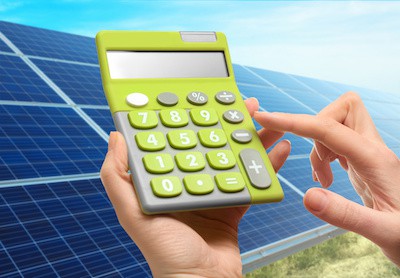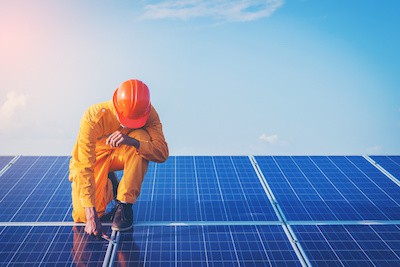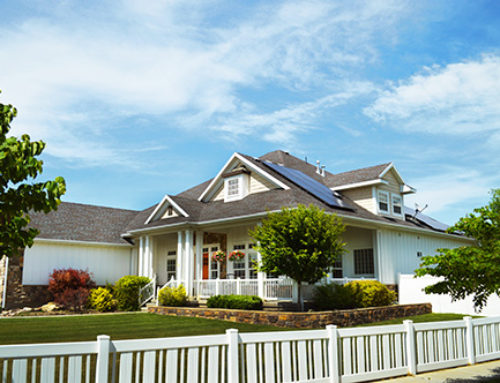People always ask why solar panels are so expensive. Solar panel costs are high, but they provide many advantages. With tax credit benefits, paying only for the electricity you use (net metering), and the benefits of renewable energy, a solar panel system can provide power in new ways to homeowners.

Many of the wealthiest investors have had to wait a long time before their investments bore fruit. The same is true for solar panels. There are many equipment costs, labor for installing, and other costs that go into having solar that homeowners don’t always realize.
We will look at why solar energy is so expensive in this Solar Panel Cost Breakdown Guide. Hardware, labor, and overhead for solar paneling companies will be considered. In the end, we hope this will help you decide to go solar.
Solar Panel Cost Breakdown
Are solar panels expensive compared to other high-tech systems? The first photovoltaic (PV) solar panels were created in 1839 by French physicist Edmond Becquerel. His solar cells were so ahead of their time that it took years before solar energy systems’ efficiency and cost were good enough for the market. So solar rooftop solar systems remain a relatively new technology – developed within the past century. Because of how recently solar energy was pioneered, the average cost of residential solar panels and solar panel installation is understandably high.
Sure, generating your own energy is a great homeowner’s concept, but making your dreams come true could take some planning and a little money. The initial up-front costs for solar are comparable to buying a new car.
Here is a Solar Panel Cost Breakdown by factor percentage:
Soft Costs = 49%
Hardware Materials = 25%
Labor = 8%
Structural Mounting = 11%
Inverter = 7%
Of course, each of these factors will vary dramatically based on the building, solar installer, and homeowner. There are both local and international causes for high prices. At times, these factors are pulling the average solar panel price in opposite directions.
On the one hand, international trade competition makes the hardware – solar panels and inverters – cheaper. Cheaper solar products have made more home installation projects financially viable.
On the other hand, soft costs will tend to be localized. Local regulations, building permits, rents, and tax incentives create local price ranges for solar panel installation. The federal solar tax credit lowers the upfront costs of installing solar panels by 26%, meaning you get rebates on your income if you install solar panels. These solar savings create a levelized cost and make solar panel systems a viable financing option for clean energy.
But if you want to make your solar energy more affordable, then you need to cut costs for each factor. Solar rebates can only go so far.
Construction Soft Costs
We have lumped several factors into the construction soft costs category, including overhead, sales & marketing, permitting, profits, renting, purchasing tools, and running a fleet of vehicles. Of course, different solar paneling companies will have different expenses to cover.

Some solar companies will try to bundle manufacturing, installation, and maintenance. These are the cases when a 3 x markup is most likely. This could move the average cost for a solar installation into the $15,000 to $30,000 range.
Hardware Materials
Hardware Materials
There are 1st, 2nd, and 3rd generation solar panels. Naturally, the more efficient solar panels will be more expensive.
Chinese Standard Solar Panels
By one estimation, cheap Chinese solar PV panels have led to an 80% price drop. Chinese workers are paid lower wages, and there are fewer regulations. This has dramatically lowered standard solar costs, but now the United States Congress is planning on leveling a “feed-in tariff,” which will increase the price.
One solar panel manufacturing technique uses cerium oxide to increase the UV absorbing properties of glass modules. Unfortunately for the solar power industry, cerium oxide is an expensive rare earth mineral, according to Mother Earth News. While China only controls 30% of rare earth minerals, it controls 90% of the market.
Labor
Getting the right solar installers for the job is important–and pricey. The average solar system installation project might include the following labor costs: 3 x workers at $25 per hour for 8 hours = $600 plus tools and transportation expenses for a $1,000 total. Moreover, you might also need to hire electricians to install sub-panels.
Hire Independent Installer
Instead of choosing solar paneling companies offering an all-in-one solution, you might hire your own independent contractor. These independent contractors might charge you about $1.00 per watt for installation compared to $3.50 per watt on average. While this lowers your solar system cost, make sure that your independent solar installers can provide the quality your solar energy systems need. If you’re going to all that trouble, make sure the people you’re hiring are viable.
Structural Mounting
Many homeowners forget about the 11% cost for structural mounting onto your rooftop or in your yard. Rooftop solar panels require additional scaffolding to attach the grid to the rooftop at an optimal 30-degree angle. Otherwise, the panels might not gather enough sunlight to meet your energy needs,
Generally, a large yard can be used to create the most efficient ground-based solar system. The ground mounting system might require a concrete foundation and solid anchors to keep the unit in place. These ground units can rotate to track the sun as it moves across the sky.

Roof Features
The cost of rooftop solar installation will vary dramatically based on your angle, material, and condition. For example, a flat roof might require the addition of 30-degree scaffolding. Solar rooftop systems might also be more difficult to install on tile or slate.
Some solar companies are offering comprehensive roofing and solar services. Ask for a discount to lower the cost of rooftop solar bundled services.
Inverter
The inverter will provide your home with safe electricity. Safe electricity changes the DC to AC (your home appliances operate on AC). Choosing the cheapest inverter type could save you money.

These are the 3 main types of inverters:
- Centralized
- Power Optimizer
- String
The Centralized Inverter works on the whole system. Of all of these inverter types, this is the cheapest.
The Power Optimizer Inverter can improve performance.
String Inverters offer 3-phase variations and remote monitoring.
Federal 30% Investment Tax Credit
While solar prices come with a high upfront cost, there are ways to cash in on a solar incentive. The Federal Government has tried to make it easy for home and business owners to qualify for its 30% Investment Tax Credit (ITC). To qualify for this federal tax credit, you simply need to record your costs for solar panels on your tax returns. Fill out the IRS Form 5695 – “Residential Energy Credit” – you can qualify if your solar is used for electricity or heating purposes.
Taking 30% off your initial costs for solar panels can be a huge help. The government decreases the solar panel installation cost because they wish to incentivize each solar company to install more power systems. It also makes you feel better about your initial investment. A solar rebate helps your solar panel array not sting your wallet as much.
Start Small
You might want to simply start small. Right off the bat, you can lower your energy bill by net metering solar from your local solar power utility. The solar power utility will subtract the energy generated from your home energy usage based on net metering solar principles.
Eventually, homeowners can upgrade with various solar products by reinvesting their energy savings. The best homeowner’s concept adds capacity as you go.
Find Special Deals

You might also look for special deals. One of the best deals is “Zero Down Solar Installation.” Some solar panel manufacturers and investors have unused solar power systems and will install them for free. Then, they will allow you to pay for the system over time.
Another option is to look for used solar panels for sale. Find cheap, used solar panels for sale and start small. You can always upgrade later.
Becoming Home Solar Power Generator
If you sit down and make a careful assessment of what you are trying to do – becoming a solar power generator – you are in rarefied air. Power home solar means that you can provide electricity to others. That is a very powerful step in increasing your home’s productivity and value.
Remember that your home value will increase with installed solar panels. This could make it stand out if you decide to sell. Your renewable energy investment improves your entire estate.
Solar projects can seem intimidating at first, and that’s why installing parts of it at a time can help. A good solar array can work by itself and with other parts of a solar power system. You can install what you can and wait until you’ve saved enough to add more. A solar energy system also saves money over time on your electricity bill. Not only that, but your new electricity cost is completely independent of any company. That sense of freedom is enough incentive to get many people to change.
With power home solar, you can provide the essential energy used to power lights, televisions, washing machines. You name it. In a sense, you should expect to pay more for this valuable power. A century ago, homeowners could not generate their own solar power energy. Now, you can.
